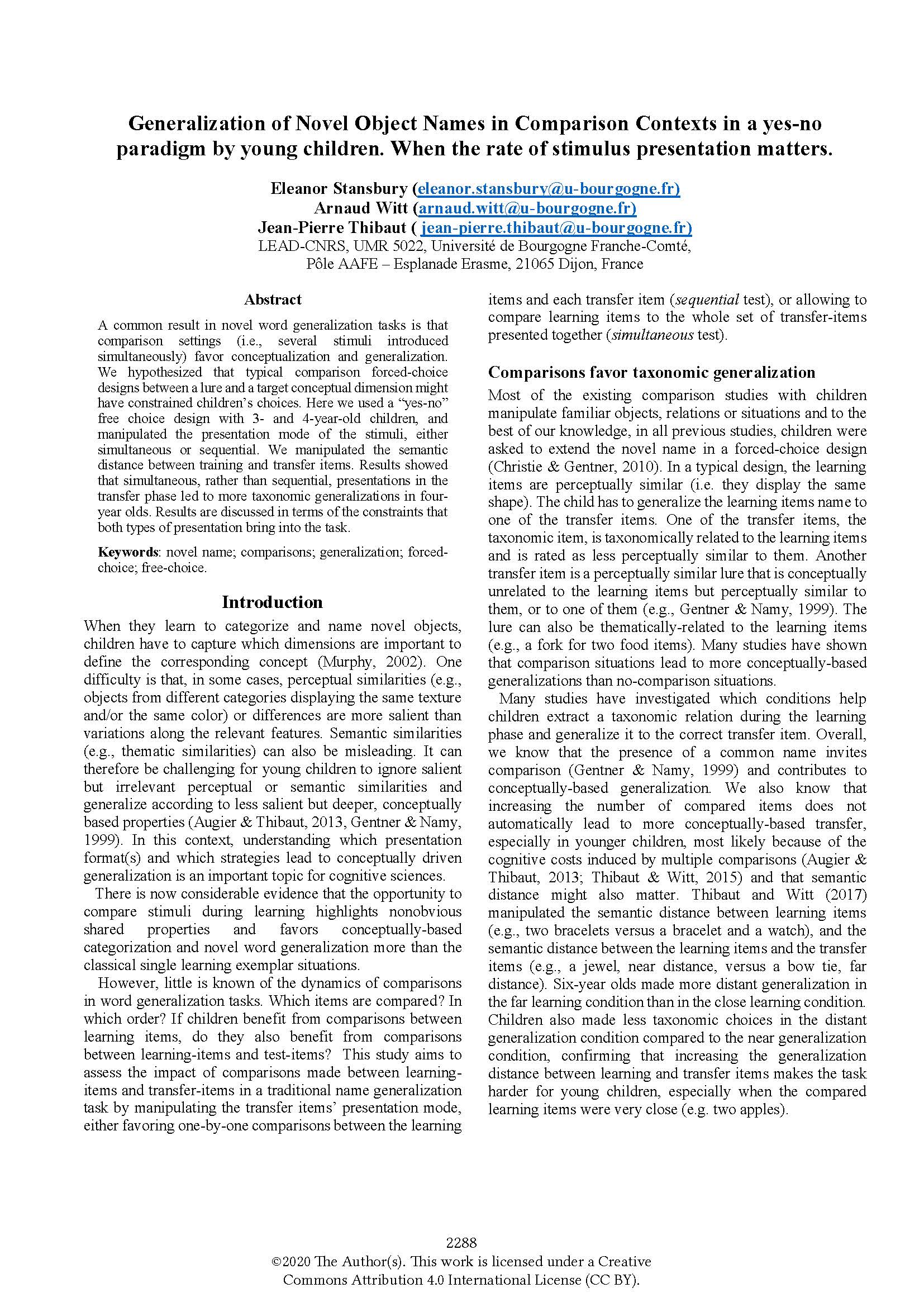A common result in novel word generalization tasks is that comparison settings (i.e., several stimuli introduced simultaneously) favor conceptualization and generalization. We hypothesized that typical comparison forced-choice designs between a lure and a target conceptual dimension might have constrained children’s choices. Here we used a “yes-no” free choice design with 3- and 4-year-old children, and manipulated the presentation mode of the stimuli, either simultaneous or sequential. We manipulated the semantic distance between training and transfer items. Results showed that simultaneous, rather than sequential, presentations in the transfer phase led to more taxonomic generalizations in fouryear olds. Results are discussed in terms of the constraints that both types of presentation bring into the task.
Generalization of novel object names in comparison contexts in a yes-no paradigm by young children. When the rate of stimulus presentation matters
